
News
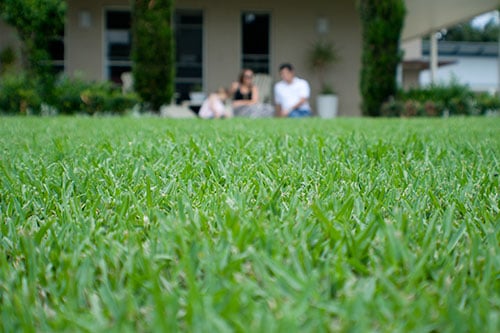
Spring Lawn Care
September 1, 2021
Fantastic! The winter colds are done and the weather’s warming up … but your lawn needs a little nursing through the next few weeks and months to achieve peak health for summer. In this blog, we take a look at what lawn care activities you can do this spring.
Test, test, test
Check your soil pH. An incorrect pH means your lawn can miss out on important nutrients and lead to overall poor performance. Test with a basic soil pH testing kit or soil probe. The optimum pH is 6.5. If your pH is higher, use sulphate of ammonia to lower it. If it’s lower, a 50:50 mix of lime and dolomite lime will help to raise it, while adding calcium and magnesium, which are often leached from acidic soils.
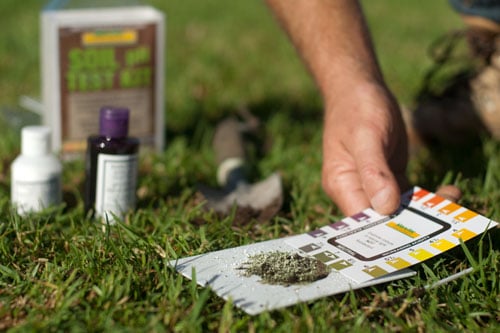
Apply a Wetting Agent or Soil Wetter
If you have a clay base, even if you put in new soil when you laid your lawn, the clay will, over time, work its way up through the soil profile to the topsoil through a process called bioturbation. You’ll need to break up the clay by aerating and applying gypsum, else your soil will suffer compaction and not supply adequate oxygen to your lawn’s roots. If your soil is sandy, you’ll need to ensure your soil can hold moisture. Correct this by regularly applying a soil wetting agent like Lawn Soaker. This coats the sand grains and enables them to cling to moisture and nutrients.

Treat the bacteria in your soil as well. Your soil is full of nitrogen-fixing bacteria such as mycorrhiza and rhizobia, and they turn the nitrogen from the atmosphere and fertilisers into a usable form of nitrate for your lawn. During winter they’re dormant, but once soil temperatures rise, they’re ready to work. They love a boost of carbohydrate, so apply a soil conditioner that contains seaweed extract like Lawn Rescue.
Aerate Your Lawn
Aerate your soil to increase the amount of air, water and nutrients it receives. This strengthens grass roots and helps create a healthier lawn. Use a garden fork to do this yourself before fertilising. Aeration decreases thatch and compaction and should be carried out annually in high traffic areas and on hard lawns. Lawns with poorer soil can benefit from aeration too. Aeration can be hard work on some soil types. A garden fork may work well, however sometimes a lawn contractor with specialist equipment may be required.
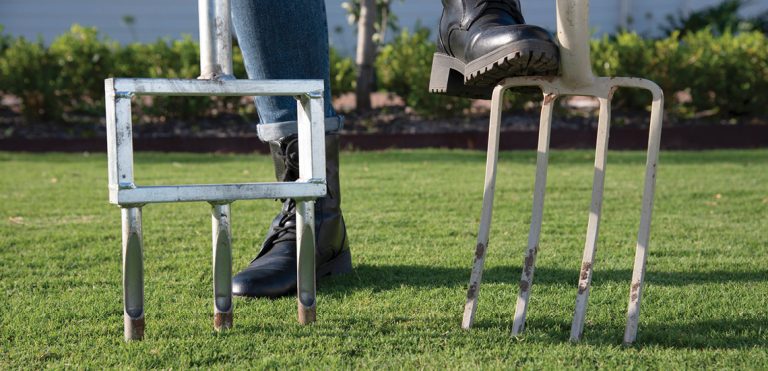
Apply Fertiliser
Fertilising in your spring lawn care regime can help speed up new growth and establish strong roots for summer.
If you live in a cooler climate, you might need to use a liquid fertiliser, as your soil temperature may not be quite warm enough for the bacteria to work its magic for a soil borne reaction using a granular fertiliser. As liquid fertilisers are ingested through the leaves of your grass, you’ll only need a little growth occurring for the liquid fertilisers to give an instant boost. Once the warmer weather really kicks in you can feed your lawn with a granular NPK fertiliser like Lawn Solutions Australia Premium Fertiliser.
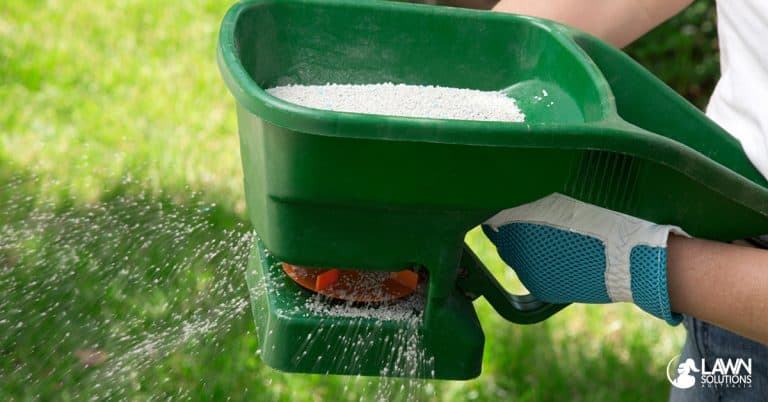
But don’t get carried away! You want to be rid of weeds first before feeding them as well. Overfeeding at this time of year may not produce the desired results, with the warmth and light intensity not quite there yet for your lawn to perform its best. A light dusting of either organic or inorganic fertiliser at the specified label rate will give your lawn the boost it needs. It’s a good idea to mow a few times first, assess the weed and lawn growth situation and then further address fertiliser needs.
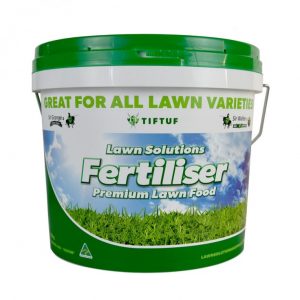
Remove Weeds
Another important activity you can implement into your spring lawn care plan is weed removal. You can remove most single weeds by hand, preferably before they go to seed. Mow over flat weeds; a healthy lawn will choke most weed types. If you’ve got many weeds or a persistent type, it may be worth calling on your local nursery or local lawn care specialist for advice on the best herbicides to use.
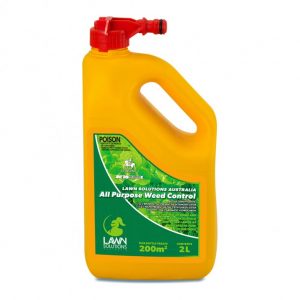
Remove Thatch
If your lawn is “spongy”, this is due to a build-up of thatch. Thatch can be removed by mowing your lawn back to its runners, nice and low. This may take a couple of mows to do so safely and effectively and is best undertaken only during the warmer months when your lawn is growing quickly. Once this is done, fertilise and water it well, to promote speedy regrowth. Scarifying and dethatching machines are also available which in some cases can be the preferred method.
Top Dressing
It’s also a good time to top dress your lawn if you wish to reduce any unevenness. Mow and fertilise your lawn first and then top dress with coarse river sand, remembering not to cover the entire leaf tip. Once you have your lawn growing at its peak, it will be ready to take on the heat of summer.
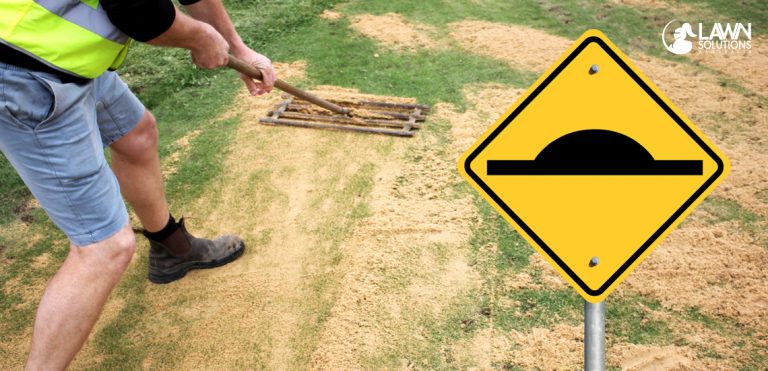
Watering
This time of the year requires minimal additional top-up watering other than natural rainfall, depending on your soil and location. You can increase water application if it’s dry over coming weeks, but a minimalist approach will often be rewarded with a healthier lawn, with stronger, deeper roots.
A deep soaking once a week will train your lawn’s roots to grow deeper into the soil, which will improve your lawn’s drought tolerance.